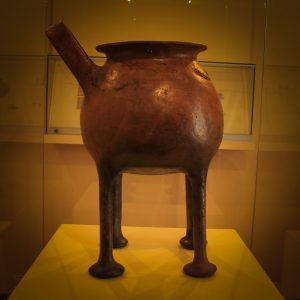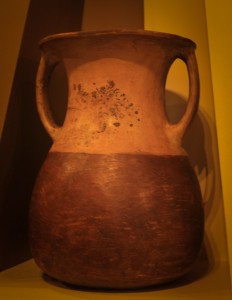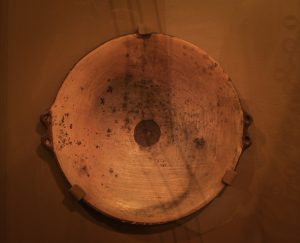What the Inca Origin Myth Says about Kinds of Food

Every schoolchild in Cuzco learns about the founding ancestors of the Incas, Manco Capac and Mama Ocllo. There are two versions of the tale: one in which they come from Lake Titicaca and settle in Cuzco and the other in which they are one quarter of the Ayar siblings who come from the cave Pacariqtambo to settle in Cuzco and thereby found the Inca dynasty.
The stories, however, have come down in partial form, relayed in the writings of mostly Spanish writers who narrate them for their own purposes. One text, the Suma y Narracion de los Incas by Juan de Betanzos, has a detailed rendering. While his text is interesting because it is said to be the version of a branch of the royal family, it is also intriguing for its emphasis on other things than simply dynastic origins.
As we have seen in earlier posts, the story also emphasizes food. It tells how the eight Ayars came from underground through a small cave, not unlike their tutelary God, the sun, who comes from the earth at dawn and returns there at dusk. They brought with them seed for potatoes and corn which they planted where appropriate in the story to emphasize the contrast between the two crops in a kind of Andean dualism. Something complete, as a result, like the chiriuchu served in contemporary Cuzco for the main feast of Corpus Christi as well as others, involves a combination of both corn and potatoes. Not all meals do, however.
The story also narrates the way two Ayar brothers, salt and hot pepper, return to the earth, the first by going back underground and the other by becoming stone. In this way another vision of unity arises, that or the world within the earth, typified by salt, and that of the sky, represented by hot peppers. Together they make food something more than simple food, something socially and ritually valuable for bringing this world together with the world above and that within. It becomes a kind of complete spiritual statement.
This is not all. The tale has more information about food.


Betanzos first notes the quality of the dress the male and female Ayars wore when they came out of the earth. Both wore clothing of finely woven wool and fine gold. The men also carried bags, what today might be called ch’uspas, that were very finely worked. In them they carried their slings, their weapon, capable of flinging stones like bolts of power. The women wore capes and belts, along with golden pins called topos.
But Betanzos does not feel satisfied with his description of the women’s dress. He gave the men slings made from fine wool and gold, a kind of weapon, and needed something equivalent for the women. As a result he writes “In this same way the women took out [of the cave] the service with which they could [cook and serve food] to their husbands. These were small pots and jars, and plates and bowls and glasses for drinking, all of fine gold.”
The “service” bears an equivalence to the slings of the men, as conquest does to cooking and serving food. It seems, though, that there is more meaning here.

Betanzos discusses pots and jars, perhaps referring to two ways of making food, one through heat and the other through fermentation such that ground grains, seeds, and fruits could become a mildly alcoholic drink called chicha. Both forms of making food continue to be very important in Cuzco today.
After this, Betanzos mentions a trilogy: plates, bowls, and glasses. Here another set of food classifications opens. Let us describe them in reverse order.
The glasses are for chicha and hot drinks–if they were used as contemporary cups are in Cuzco, though today they might also be for sodas and other soft drinks, or beer.
The bowls are for soups and stews: food cooked in hot water and served surrounded with hot liquid. These are still important today. Most midday meals begin with soup, and in the morning local people prefer a steaming bowl of soup to begin the day properly.
The plates would be for serving dryish food, no matter how prepared. I say dryish because it might have a sauce on it but is not sitting in a lake of liquid like the soup.
Something else of importance appears here. The soup carries a relationship to the aqueous world of the highland lakes, such as the big Lake Titicaca from which all life is said to have ultimately come, as well as the Pacific ocean. In it you find pieces of meat and tubers like islands, as well as lots of other bits of food plying the waters depths.

The food on the plates would represent the dry land, especially the mountains that rise abundantly in Peru.
As a result, a whole would involve bringing together the two comparable parts, the water and land, like the sequence of today’s full meals where soup comes first followed by a plate containing what is called the second. The meal is finished with a libation from the glass of chicha, or without the libation simply with a liquid drink.
Later, Betanzos mentions that the Ayars left lots of fine clothing and golden items of food service in the cave. If nothing else, this statement marks the space inside the earth as one containing lots of ancestral wealth that can potentially be claimed or found. This is also a theme that arises constantly in contemporary Cuzco, but we will save that for another day.




